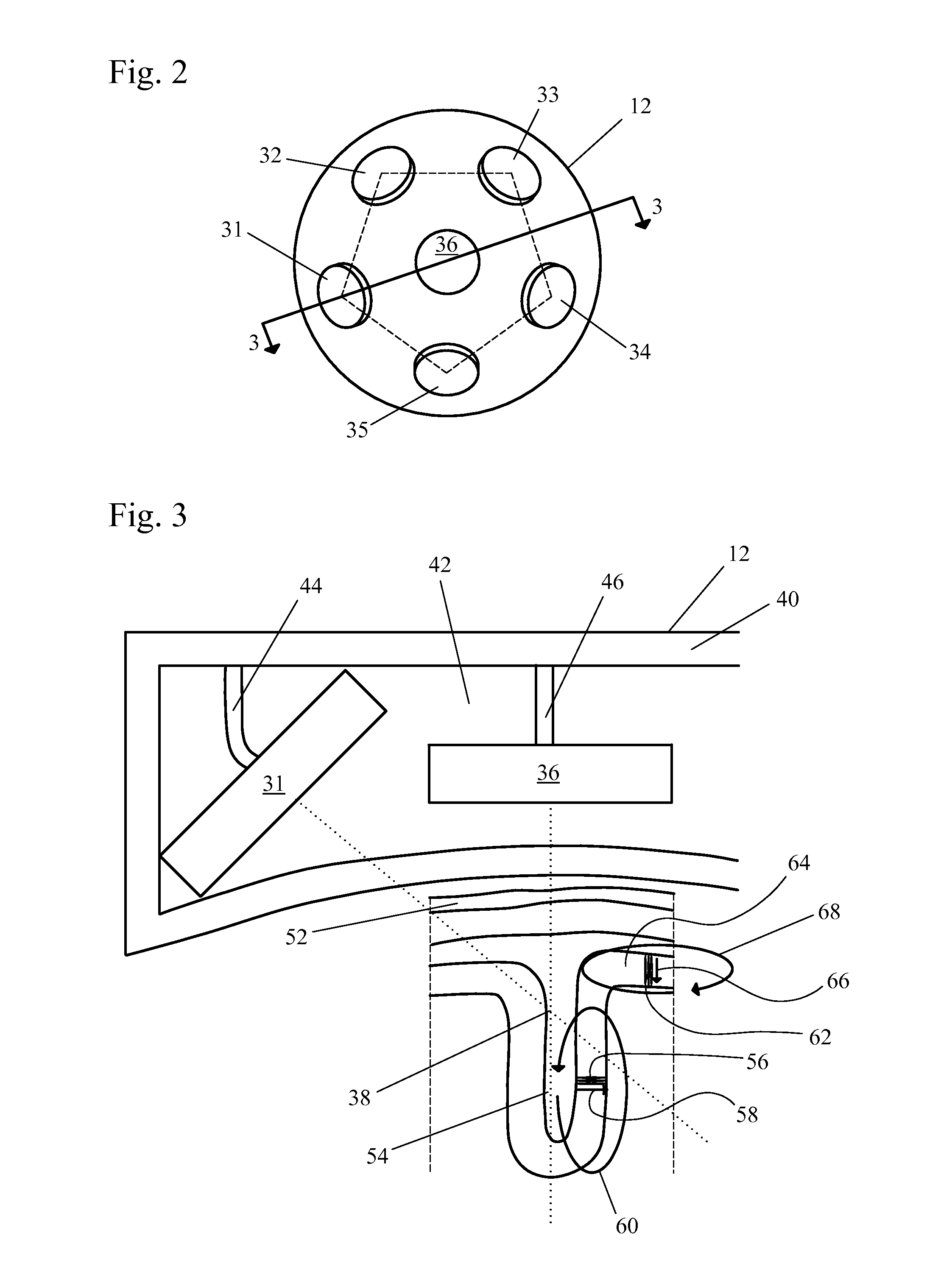Magnetic Imaging Device To Inventory Human Brain Cortical Function
a magnetic imaging and cortical function technology, applied in the field of medical imaging, can solve the problems of large imaging problem, large complexity, unpredictable signal attenuation by tissues,
- Summary
- Abstract
- Description
- Claims
- Application Information
AI Technical Summary
Benefits of technology
Problems solved by technology
Method used
Image
Examples
Embodiment Construction
[0030]To achieve adequate data homogenization in order to render the content of the collected data understandable without degrading it, in the current apparatus and methods the data collection is limited to neural transmission originating in the most superficial neurons lining the sulci of the relevant gyms of the human cortex. Also, the output is presented as a contour map and no attempt is made to determine the underlying dipole or current structure.
[0031]Systems and methods include a number of major simplifications over prior art systems and methods. First, the system preferably uses a single wire Faraday cage. The Faraday cage is a wire enclosure formed by a mesh of conducting material and blocks external static and non-static electric fields by canceling out their effects on the interior of the cage. The Faraday cage surrounds the human subject and SQUID equipment.
[0032]Second, far fewer SQUID detectors are required, which reduces the equipment cost. In some embodiments, about ...
PUM
 Login to View More
Login to View More Abstract
Description
Claims
Application Information
 Login to View More
Login to View More - R&D
- Intellectual Property
- Life Sciences
- Materials
- Tech Scout
- Unparalleled Data Quality
- Higher Quality Content
- 60% Fewer Hallucinations
Browse by: Latest US Patents, China's latest patents, Technical Efficacy Thesaurus, Application Domain, Technology Topic, Popular Technical Reports.
© 2025 PatSnap. All rights reserved.Legal|Privacy policy|Modern Slavery Act Transparency Statement|Sitemap|About US| Contact US: help@patsnap.com



